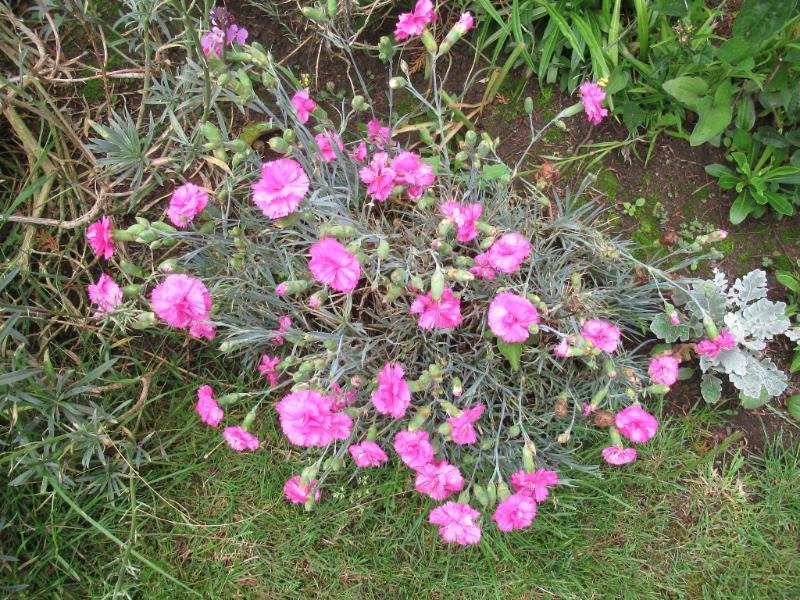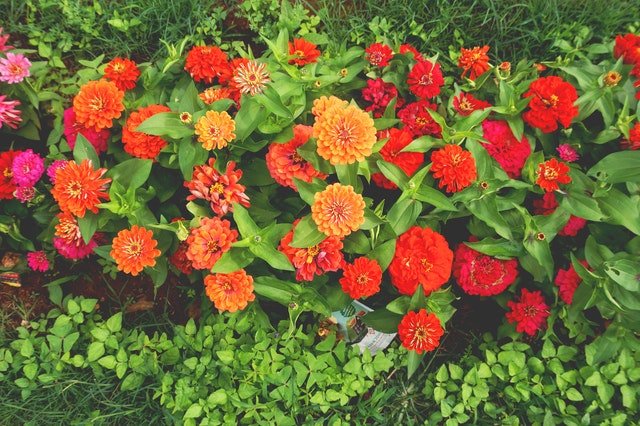Key Takeaways
- Does dianthus spread? Yes, dianthus spreads readily in ideal growing conditions through self-seeding.
- How big does Dianthus get? Most dianthus varieties reach 6 to 18 inches in height and spread 12 to 24 inches wide. Some can grow up to 3 feet tall.
- How far does dianthus spread? Dianthus can spread 12 to 24 inches per plant through seeds and rhizomes. Over time, plants can spread several feet through self-seeding.
- How fast does dianthus spread? Dianthus spreads at a moderate rate through both rhizomatous growth and prolific self-seeding. It takes 1 to 3 years for seedlings to reach maturity and set seed themselves.
Table of Contents
Overview of Dianthus
Dianthus, also called carnations or pinks, are popular cottage garden flowers that are known to spread readily under ideal growing conditions.
The species spreads through both rhizomatous growth and prolific self-seeding.
Over time, dianthus can naturalize and take over spaces through its spreading habit. Controlling spread depends on the dianthus variety and proper maintenance.
Does Dianthus Spread?

Yes, dianthus has a moderate spreading habit through its rhizomatous root system and its prolific production of seeds:
- Rhizomes – Many dianthus varieties produce creeping underground stems called rhizomes. These allow the plant to pop up new growth away from the parent plant, expanding its footprint.
- Self-seeding – Once dianthus plants reach maturity after 1 to 3 years, they produce copious amounts of seeds. These seeds readily sprout to create new plants wherever they land.
So both rhizome growth and self-seeding contribute to dianthus readily spreading in ideal conditions.
How Big Does Dianthus Get?
Dianthus size depends on the variety, but most reach 6 to 18 inches tall and spread 12 to 24 inches wide:
- Smaller varieties like Dianthus alpinus and Dianthus deltoides stay under 12 inches tall and wide.
- Most common cottage pinks grow 12 to 18 inches tall and wide.
- Cheddar pinks reach up to 24 inches tall and wide.
- The tallest varieties, dianthus gratianopolitanus, can grow up to 3 feet tall with a 2-foot spread.
So expect a moderate plant size between 1 to 2 feet for most dianthus varieties. Give them proper spacing to accommodate growth.
How Far Does Dianthus Spread?
A mature dianthus plant spreads 12 to 24 inches per year through rhizome growth and self-seeding:
- The underground rhizomes allow dianthus to spread up to 24 inches outward per year.
- Meanwhile, seeds can spread several feet away from the parent plant when dispersed by wind, water, animals, and gardening tools.
- Over 3 to 5 years, dianthus can spread several feet in all directions through the combination of rhizomes and prolific self-seeding.
Without maintenance, dianthus can naturalize and take over spaces fairly quickly through seeds and rhizomes. Manage spread by containing seedlings.
How Fast Does Dianthus Spread?

Dianthus spreads at a moderate rate, with new plants reaching maturity in 1 to 3 years:
- It takes at least 1 year for new dianthus plants to germinate from seed, establish roots, and grow to a mature, flowering size.
- Most varieties take 2 to 3 years to go from seed to mature plant ready to self-seed again.
- So while dianthus doesn’t spread extremely quickly, its self-seeding habit leads to continual expansion year after year.
Containing the first year’s seedlings is key to controlling rapid spread. Also, divide mature plants every 2-3 years to control spread through rhizomes.
Controlling Dianthus Spread
If dianthus begins spreading too far, here are some ways to control it:
- Deadheads spend flowers before they go to seed.
- Cut back any aggressive shoots and dig out rapidly spreading rhizomes.
- Contained and divided plants every 2-3 years to control mature plant size.
- Pull out unwanted self-seeded seedlings as they sprout.
- Choose non-spreading varieties like the Dianthus Star® series and the Dianthus idella® series.
With proper maintenance and preventative measures, dianthus spreading habit can be managed.
Benefits of Dianthus Spread
Despite some maintenance required, allowing dianthus to spread has benefits:
- Creates beautiful, naturalized cottage garden effects over time.
- Requires less replanting and planting of new plants each year.
- Attracts pollinators over a longer bloom period.
- Provides ground cover and color in larger landscape beds.
If properly contained, the spreading capabilities of dianthus can be an asset to any garden.
Key Characteristics When Dianthus Spreads
Here are a few key characteristics to expect as Dianthus spreads:
- Foliage stays low and dense in a spreading mat form.
- Flowers continually rebloom in warmer regions, with peak blooms in spring and summer.
- Plants adapt readily to conditions and do not require much care when established.
- Varieties hybridize, leading to interesting and unexpected flower colors over time.
Ideal Conditions for Dianthus Spread
Dianthus spreads best when grown in full sun and nutrient-rich, well-draining soil. Ideal conditions include:
- Full sun – at least 6 hours of direct sunlight per day
- Soil – average to sandy, with good drainage
- pH – neutral to slightly alkaline, 6.0-8.5
- Fertility – average soil fertility; avoid high nitrogen
- Climate – cooler climates with mild summer heat
- Water – average moisture; allow the soil to partly dry out between watering
Meeting these conditions encourages plants to readily self-seed and expand through rhizomes into surrounding areas.
Tips for Working with Spreading Dianthus
If you decide to let your dianthus spread, here are some tips:
- Start with just a few plants the first year and allow them to set seed before adding more plants.
- Be diligent about pulling unwanted seedlings as they sprout to control spread.
- Surround dianthus with barriers like walkways and taller plants to direct spread.
- Cut back any floppy growth and deadhead to encourage density and compact growth habits.
- Divide large masses of plants every 2-3 years to reinvigorate and control spread.
- Choose designated areas where you don’t mind naturalization like informal beds, margins, and gravel gardens.
Conclusion
In the right environment, dianthus readily spreads to naturalized areas with vibrant, reblooming flowers.
With some maintenance to control unwanted spread, the self-seeding and rhizomatous habits of dianthus can be used to create beautiful, low-maintenance plantings that evolve organically over time.
Just be diligent about containing new seedlings and divvying plants as needed. What dianthus lacks in tidiness it makes up for in charm and flower power.

Gardening is my passion and growing plants indoors has always been a stress relief for me. Grow a banana tree in my apartment once (although failed to produce bananas).






